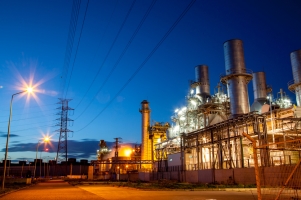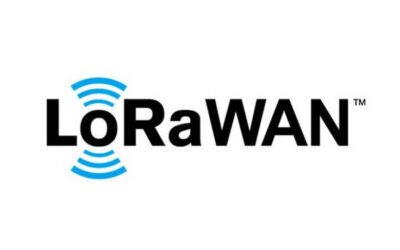How To Build An Energy Management System

- WHY DO YOU NEED AN ENERGY MANAGEMENT SYSTEM?
- HEAT CONTROL SYSTEM: YOUR FEATURES LIST
- ENERGY MANAGEMENT SYSTEM DEVELOPMENT APPROACHES
- TECH STACK
- TAKEAWAYS
Nowadays in the time of active ecological and economical moves nobody wants to waste their resources. Doesn’t matter is it money or nature resources. But have you ever wondered How Much We Are Spending On Heating and how it would be possible to reduce expenses? Today we will tell you about our solution for that problem. Aduk GmbH is ready to provide you with embedded hardware and firmware development services.
Why Do You Need An Energy Management System?
Waste. Unpleasant word, isn’t it? We think so. But we do it all time and never thought how much. In 2012 American scientists counted up that for every one unit of energy that is converted into electricity in power plants today, two units of energy are thrown away. So just about 33% is using by people and other 67% wastes in transfer or other. Such problem exists at our homes too.
Have you noticed that there are situations when heating is not required but for some reason you cannot turn it off or turn it on in time? Such situations can occur for example after severe frosts when it pasts. In this case the heating just overheats the room and wastes your money.
And what if we tell you that it is possible to control the Energy System with high accuracy and in addition to calculate the optimal electricity tariffs and ensure economical operation of heating devices? Modern technologies and few specialists will help us to do this. And we will tell how. Let’s go!
Heat Control System: Your Features List
First of all, we have to create adaptive software that is able to independently recognize, configure and monitor connected modules and devices.
This step is basic and the most stressful. It combines teamwork of programmers, engineers and managers that working in one flow complementing the composition. After that step you will see a masterpiece in code.
Another feature you’ll need to develop An Energy Management System is Interface. We are suggesting to do a web-based interface for monitoring and manual calibration of the operating modes of our system.
Yeah, it’s time for designers and frontend developers to draw some curves and make them alive. On that step there is visual magic that helps you control all processes in Energy Management System really handy and easy.
If you plan to make your own Energy Management System, then you cannot go forward without a powerful database.
For faster response and independence from your own we creating a “cloud” which allows you to store, edit downloaded data, and manage them.
After previous step we decided to add integrated function of downloading updates from the created cloud server, storing several versions of them and using direct developer support. This will facilitate maintenance of DB.
At last, we ensure the possibility to configure the system for your specific needs.
Energy Management System Development Approaches
Ok, let’s imagine that now you have a clear vision of your future system. Yet, you still have to turn your ideas into a working software product. Possible 2 ways to do it are:
– In-House Development
– Outsourcing
Let’s briefly review the pros and cons of each solution.
In-House Development
The In-House Dev Approach is based around the idea of building your own full-time development team. This option has both positive and negative sides and here they are:
Pros:
You will create a dedicated team that is fully focused only on your project.
Direct supervision allows you to plan the schedule of your in-house team, assign task and make sure that everyone is on the right place.
Cons:
You will have a “headache” to build the team from 0 to 100. This will take all of your time and minds. It may take months.
Prepare to face with more expenses than you expected. You will have to rent an office, purchase technical equipment, cover health insurance, and vacations, etc.
You have to make well considered plan that excludes situations when your developers run out of tasks and have nothing to do.
Conclusion: In-House approach will take a lot of time and resources and makes sense only once the business model is validated and you’re planning long-term development.
Outsourcing
Sometimes (maybe more often) it’s really handy to outsource development to a Remote Dev Team. This solution helps you to get rid of the development “headache” without making you create your own team from scratch. But you have to know several pros and cons of it, here they are:
Pros:
You will hand your Project to the balanced team of professionals that have all Agile ceremonies and well-organized dev process.
It’s easier. And it’s true. You can just write requirements and wait until the job’s done. But nobody will not say a word if you supervise each step.
This is the best option regarding the price-quality ration because you don’t have any extra expenses since you pay only for the completed work.
You don’t have the pain of managing a dev team and can fully focus on Product Development, Customer Interviews and Fundraising.
Cons:
Dev Agencies aren’t interested in working on small projects, so full-scale development is in priority.
This option is more expensive as you have to invest cash in the development in comparing with a technical co-founder or business partner.
Conclusion: Outsourcing is one of the best options to consider on the early stages since it provides a scalable end-to-end development solution at a reasonable price.
Tech Stack
As we mentioned earlier, here are some technical requirements and tools that helps you in developing own Energy Management System:
Material base:
Foundation for any tech-driven project. In our personal experience, you will need Cortex M3 series STM32 based microcontroller; Raspberry Pi 3; 16-bit sigma-delta ADC; communication protocols between the SPI expansion cards; I2C exchange protocols between the microcontroller and the ADC and DAC chips.
Programming systems and environments:
For environments we decided to choose Linux; Free RTOS; jQuery Mobile; CodeSyS v3.5; SolidWorks; Altium Designer.
Programming languages that we used:
С; C++; PHP; JAVA; SQL Lite; HTML 5; ST language for CodeSyS.
Takeaways
In the end of our tale we hope that some tips from this in-depth article will be useful and maybe only you can do the Energy Management Revolution with a little bit help. Let’s recall all key steps in brief:
Clearly define what are you building and how it solves your problems or problems of your customers.
Remember that your system shouldn’t do everything in World so choose only Development Backlog with matching MVP-features.
Finding the right Tech Partner – the most important (In-House Team or Outsourcing – matter of opinion).
Get all things done!
ADUK Team can help you with all kinds of Hardware and Software Development for every task – it’s a question of one phone call or E-mail!
Recent Posts
- What Is an Exoskeleton Suit?
- Where can you use an ultrasonic motor?
- Smart Camera: System That You Can Use for a Wide Variety of Purposes
- Why Is the Smart Toothbrush Better Than a Regular One?
- Microcontrollers: An Integral Part of Embedded Hardware
- Air Quality Monitoring System: Why It’s So Important in Modern Realities





